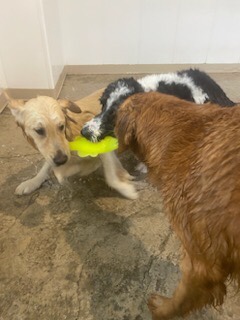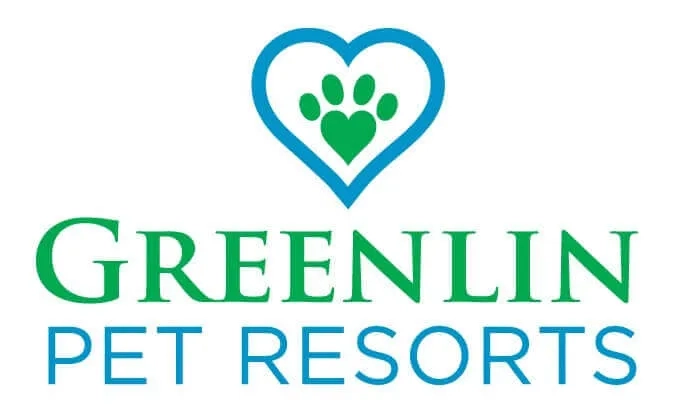Help Your Puppy Overcome Resource Guarding Issues

Puppies typically start to show signs of resource guarding around 4-5 months of age, as they mature and begin to understand their place in the pack hierarchy.
Dogs who are allowed to guard resources without consequence can become possessive and aggressive, which can lead to bites and other serious problems. If you’re concerned that your puppy may be showing signs of resource guarding, keep reading to learn more about resource guarding in puppies and why you should stop it.
Is Your Puppy a Resource Guarder?
Resource guarding is when a puppy becomes possessive of its food, toys, or other belongings and growls at or snaps at anyone who tries to take them away. It’s a defense mechanism that allows them to keep what’s theirs.
While this behavior is normal in puppies, it’s important to stop it before it becomes a habit. Otherwise, your puppy could grow into an aggressive dog that’s difficult to control.
For example, a puppy who growls when someone reaches for his food bowl is exhibiting resource guarding behavior. Similarly, a puppy who snaps at another dog who tries to take his toy away is also guilty of resource guarding.
Here Are 5 Signs That Your Puppy Might Be Resource Guarding:
- Growling or snapping when someone comes near his food bowl or toys.
- Hiding his food bowl or toys from view.
- Refusing to share his food or toys with other dogs or people.
- Getting possessive over certain safe spots in the house, like his bed or crate.
- Guarding you from other people or animals, even if he’s never met them before.
How to Stop Resource Guarding
There are a few things you can do to stop resource guarding in your puppy:
-
- Start early: The best way to stop resource guarding is to prevent it from happening in the first place. If you have a new puppy, get into the habit of regularly handling their food bowl, toys, and bones. This will get them used to you taking things away and will help prevent them from becoming possessive.
- Use positive reinforcement: Whenever your puppy doesn’t growl or snap when you take something away, praise them and give them a treat. This will reinforce the desired behavior and make it more likely that they’ll do it again in the future.
- Seek socialization: The best way to prevent resource guarding in puppies is to socialize them early and often. Socialization means exposing your puppy to as many new people, places, and things as possible so that he learns to accept them as normal parts of life.
- Encourage desensitization: One of the best ways to socialize your puppy is to have friends and family members over frequently. When they come over, have them sit down next to your pup while he eats so that he gets used to having people near him while he eats. You can also have them drop a toy near him while he plays so that he starts getting used to sharing his toys with others.
- Remove temptation: The best way to reduce the likelihood of resource guarding becoming a habit is to try and avoid situations where it may emerge. For example, if dogs become aggressive around other dogs in relation to food, remove food sources and avoid giving treats in this situation.
- Be mindful of unintentional reinforcement: If the only time you remove something like a food or a toy from your dog is when they have acted aggressively, then they may learn that their behavior was justified. Likewise, do not respond to their behavior with aggression. Instead, try removing the dog from the situation while engaging in desensitization and socialization activities on a more-regular basis.
Resource Guarder? This Is How You Should Deal With It.
- Redirect their attention: If your puppy start growling at someone who approaches while they are eating, try calling their name or offering them a treat so that they associate people approaching during mealtimes with something positive instead of something negative.
- Teach the “drop it” command: This command will come in handy if your puppy tries to hide something or snaps at someone who tries to take it away from them. By teaching them to “drop it” on command, you’ll be able to get them to let go of whatever they’re holding onto without having to wrestle it out of their mouth. Make sure to praise them lavishly every time they obey so that they know they’re doing the right thing.
- Don’t pet them while they’re eating: It’s natural to want to comfort a scared or anxious puppy, but resist the urge to pet them while they’re eating. This will only reinforce the idea that people approaching during mealtimes equals receiving attention/pets, which is what they’re hoping for in the first place! Instead, wait until they’ve finished their meal before giving them any pets or affection.
- Distract and redirect: If your puppy starts stiffening up and getting still when someone reaches for something they’re holding onto, try distracting them with a treat or toy so that they don’t have time to get anxious about the situation. Once they’re distracted, have the person slowly reach for the object again and continue doing this until your puppy no longer feels the need to guard it from being taken away.
Get Help Resource Guarding in Puppies from the Experts at Greenlin Pet Resorts
Resource guarding is a normal canine behavior that can become problematic. The best way to prevent resource guarding in puppies is to socialize them early and often so that they learn to accept people as normal part of their life.
If your puppy is exhibiting any of the above behaviors, he may be resource guarding, and it’s important to nip the problem in the bud before it gets out of hand. The good news is that resource guarding can be managed with proper dog training and socialization. If you’re unsure of how to proceed, consult with a professional trainer at one of six locations in the Harrisburg area today!
